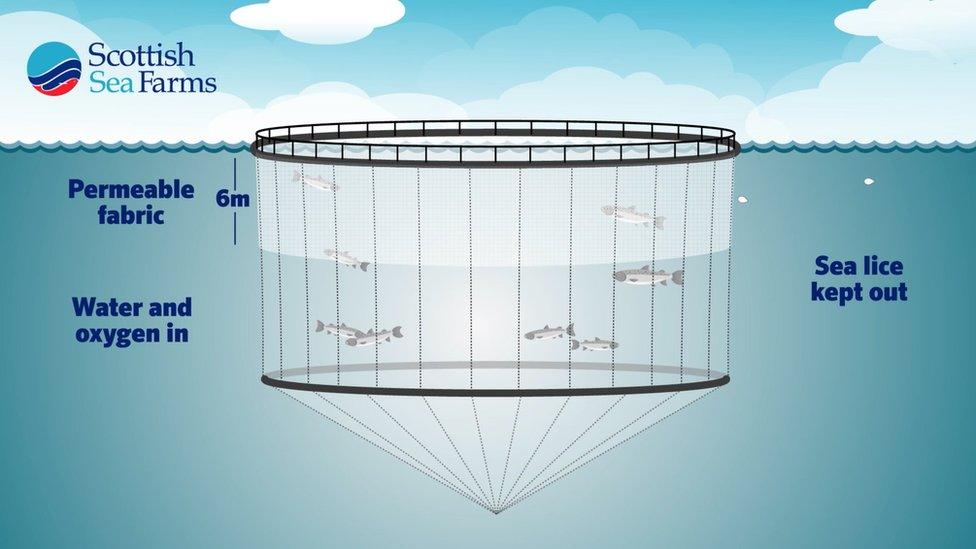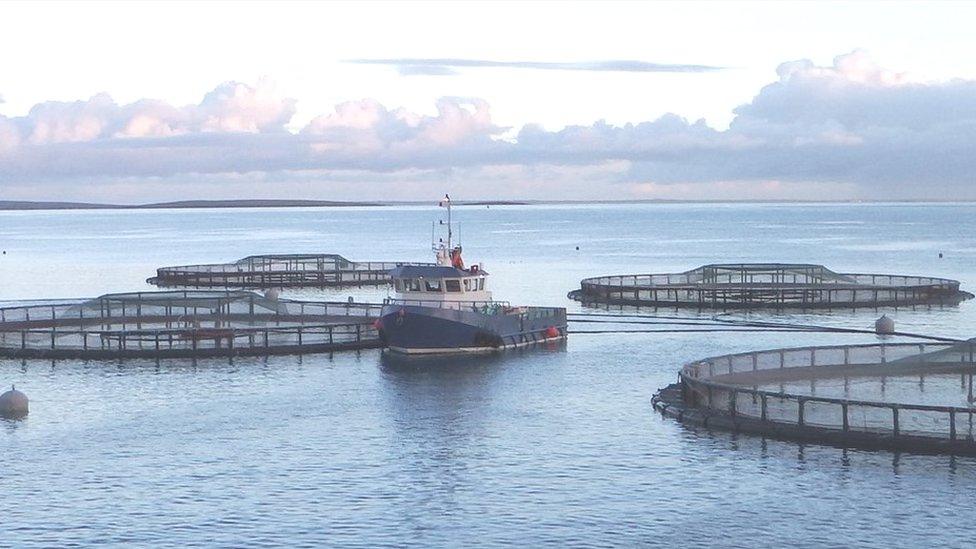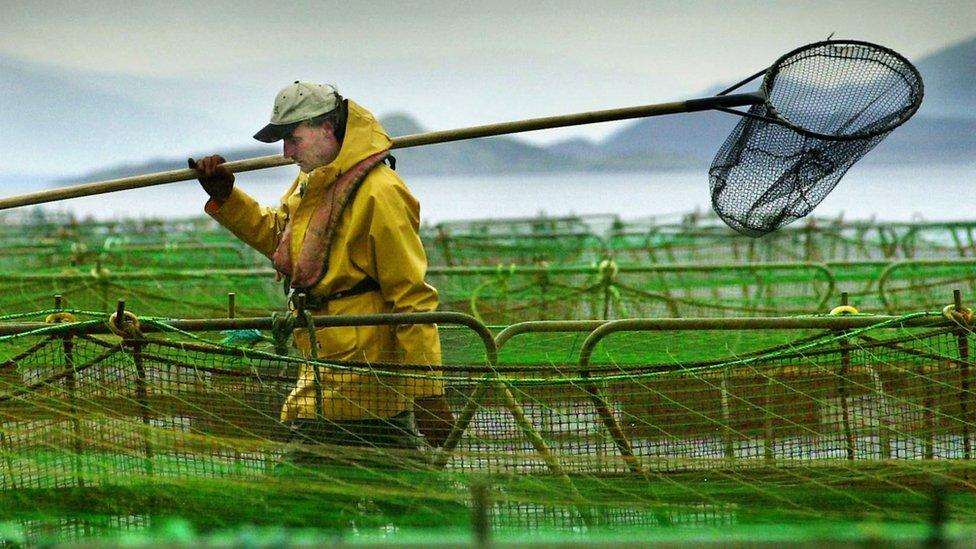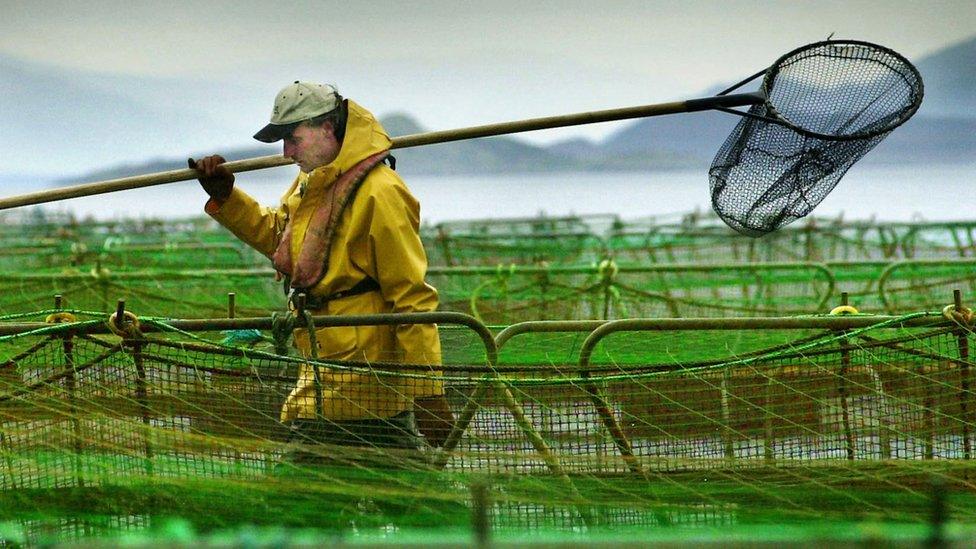Scottish salmon producer to roll out sea lice shields
- Published

Scottish Sea Farms plans to roll out the new shields to 11 other sites in Scotland
Salmon producer Scottish Sea Farms (SSF) is to roll out new anti-sea lice shields at its sites following a trial project in Shetland.
The Norwegian-owned firm said a current crop at its Ronas Voe farm outperformed "all previous years" after the shields were introduced in May last year.
It is now investing £800,000 on similar protection for 11 of its other farms.
SSF said it was also working with neighbouring salmon growers to "synchronise" use of the shields.
Each shield consists of a permeable fabric that fully encases a fish pen to a depth of 6m (20ft).
The company said this provided a barrier against sea lice, which are most commonly found in the first few metres below the water's surface.
It also reported that since the protection was introduced, the salmon at Ronas Voe had shown "strong growth and biological performance".

Sea lice have been a major problem for the farmed salmon industry.
The parasites feed on the skin and blood of salmon, and can weaken the health of a fish and its growth.
Last week the world's biggest salmon farmer, Marine Harvest - which has significant operations in Scotland - announced spending cuts in response to the rising costs of treating sea lice and disease.
'Hugely encouraging'
SSF managing director Jim Gallagher said: "We strive, wherever possible, to replicate the natural conditions that salmon are known to thrive in.
"As any farmer will understand however, this comes with its own risks as the marine environment presents new challenges all the time.
"We are continually exploring and investing in new ways of dealing with these challenges, and it's hugely encouraging to see positive early results such as these at our trial project in Shetland."
The new protection measure is part of a wider £11.8m investment by SSF on fish health and welfare issues.
Steps include more than doubling the use of cleaner fish to control sea lice, and co-funding new "Thermolicer" technology, which is designed to dislodge and catch sea lice through a bathing process.
- Published14 February 2018

- Published24 January 2018
